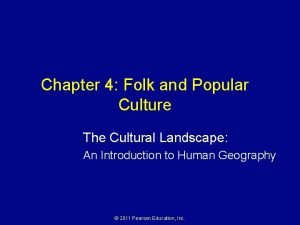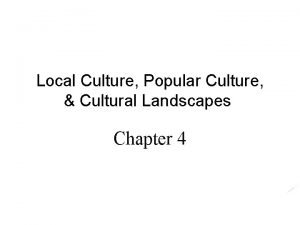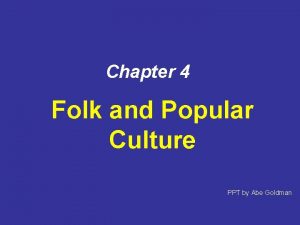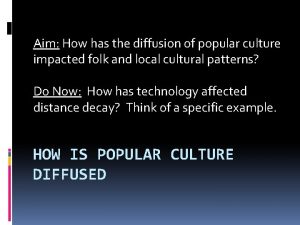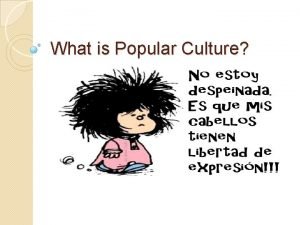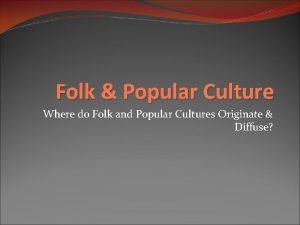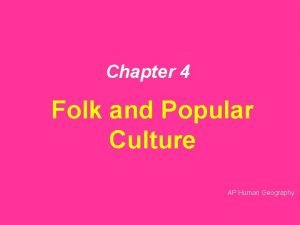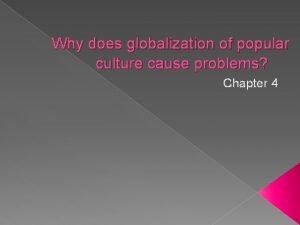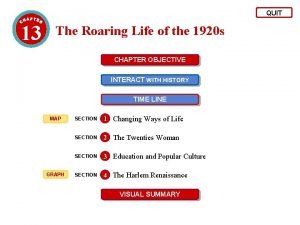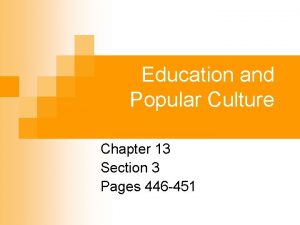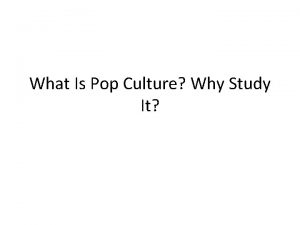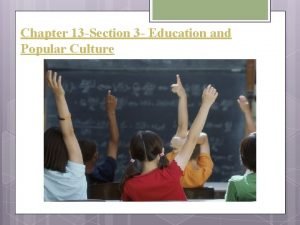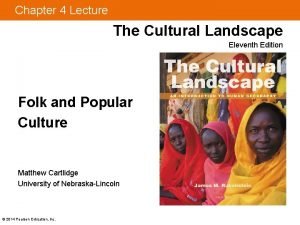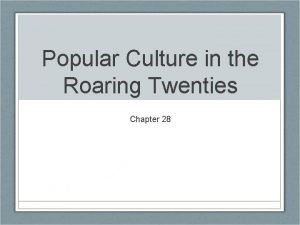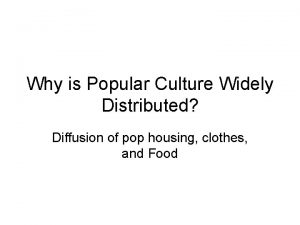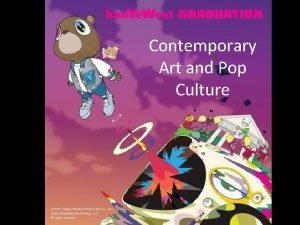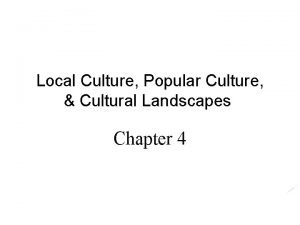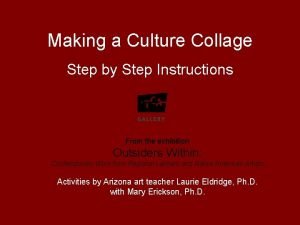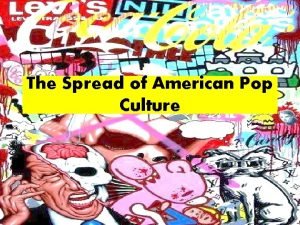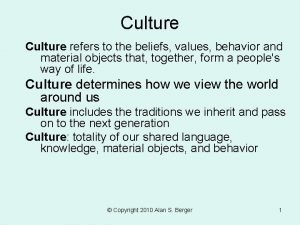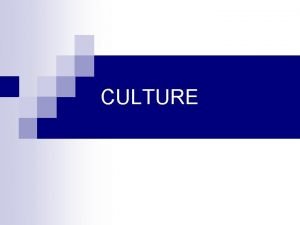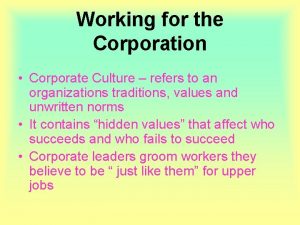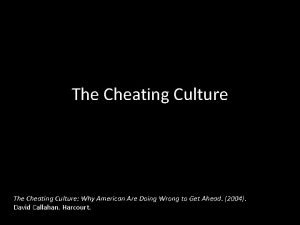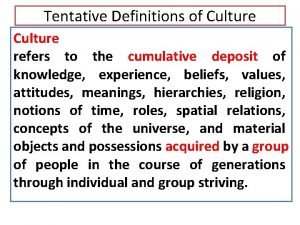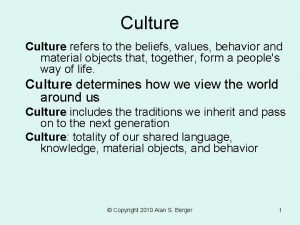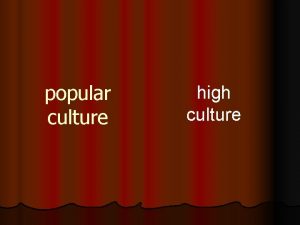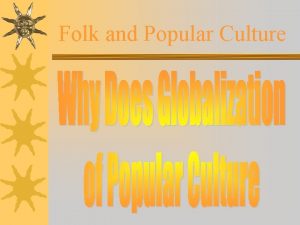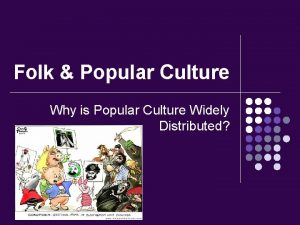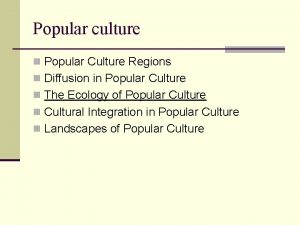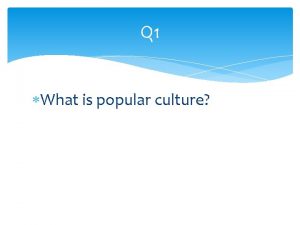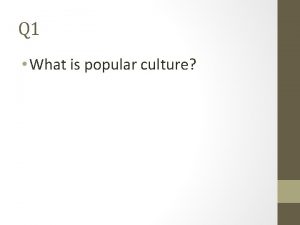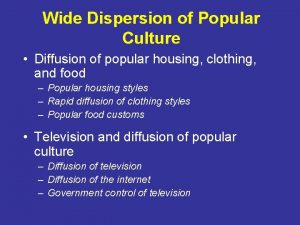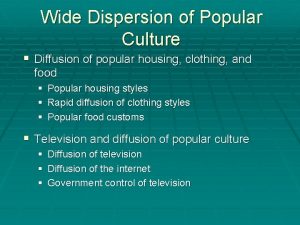Q 1 What is popular culture Refers to

















































- Slides: 49

Q 1 What is popular culture?

Refers to cultural products produced for sale to the mass of ordinary people. These involve mass produced standardized short-lived products of no lasting value

Q 2 What are the four different types of identity?

Q 3 What is a stigmatised identity?

Refers to an identity that is in some way undesirable or demeaning and excludes people from full acceptance in society

Q 4 What is secondary socialisation?

Refers to the socialisation which takes place outside the family and occurs instead in schools, media, friends and religious institutions

Q 5 Identify the 5 distinct areas of secondary socialisation

The education system Peer group Workplace The mass media Religious institutions

Q 6 What does Jenkins (1996) argue about the socialisation and the social construction of self and identity?

Jenkins argues that identities are formed in the socialisation process

Q 7 How does Mead see the identities of individuals?

Mead sees the identities of individuals as being in a state of flux. This is because they are changing and developing all the time as they go through daily life.

Q 8 Identify one criticism of structural approaches and one criticism of social action approaches

Criticisms of structural approaches fail to recognise: free will; choice; challenges; disobedience Criticisms of social action approaches include: not enough emphasis is placed on power inequalities; power of social institutions; social etiquette; need to work/earn money;

Q 9 What does Bourdieu mean by ‘habitus’?

Habitus is the cultural possessed by a social class, into which people are socialized, which influences their cultural choices and tastes

Q 10 What does Bourdieu mean by cultural capital?

Cultural capital is the education, knowledge, language, attitudes and values possessed by the upper and upper middle-class

Q 11 Identify one key aspect of the new working-class

Home-centred lifestyle, with no involvement with neighbours and wider community Work is for making money not friends or identity No loyalty to their class Women more likely to be in paid employment

Q 12 What type of approach is Cooley’s? What did he mean by the concept of ‘looking-glass self’? 1 mark for each point

Answer Social action approach The ‘looking-glass self’ is the idea that our image of ourselves is reflected back to us (like a mirror) in the view of others

Question 13 What term did Bourdieu come up with when referring to the cultural framework and set of ideas possessed by a social class, into which people are socialised, initially by their families and which ultimately influence their cultural tastes and choices? 2 marks

Answer Habitus

Question 14 Future time orientation and deferred gratification are two ideas which separate the middle-class from the working-class. 1. What are future time orientation and deferred gratification? 2. Which of the two social-class identified in the question have the above?

Answer Planning for the future Putting off today’s pleasures for tomorrow’s gains Middle-class

Question 15 Which social-class has the following: 1. Men are seen as breadwinners, women mainly housewives 2. Getting a job with a skill and earning money, far more important than education and qualifications 3. A strong commitment to old Labour Party

Answer Traditional working class

Question 16 Define gender identity and provide one example

Answer Refers to how people see themselves and how others see them in terms of their gender roles and biological sex

Question 17 In relation to gender and identity what did Mead (2001) uncover?

Answer She found from studying tribe in New Guinea that masculine and feminine characteristics are not based on biological differences but are a reflection of cultural conditioning within different societies. Therefore these differences are seen to be socially constructed.

Question 18 What did Connell (1995) mean by the term ‘hegemonic identity’?

Answer Hegemonic identity is one that is so dominant that it makes if difficult for individuals to assert different identities

Question 19 What does the statement ‘the social construction of hegemonic gender identities through primary socialization

Answer This means parents and relatives tend to hold stereotyped views of typical characteristics of boys and girls which are used as norms when socialising their children

Question 20 While keeping the last question and answer in mind, what are the four process Oakley identified are evident during primary socialisation?

Answer Manipulation Canalization Verbal appellations Differential activity exposure

Question 21 What do you understand by the term new man?

Is a man who is seen to be more caring, sharing, gentle, emotional etc

Q 22 What is diaspora?

Diaspora is the dispersal of an ethnic population from its original homeland its spreading out across the world while retaining cultural ties to the nation of origin

Q 23 What is a hybrid identity?

A hybrid identity is a new identity formed from a mix of two or more other identities

Q 24 What is ethnocentrism?

Ethnocentrism is a view of the world in which other cultures are seen through the eyes of one’s own culture

Q 25 What is nationality?

More to follow……
 Homework due today
Homework due today Folk culture and popular culture venn diagram
Folk culture and popular culture venn diagram Folk cultures are spread primarily by
Folk cultures are spread primarily by Daily life and popular culture in the 1950s
Daily life and popular culture in the 1950s Folk and popular culture
Folk and popular culture What is assimilation
What is assimilation Popular culture ppt
Popular culture ppt Learning english through social issues
Learning english through social issues Popular culture diffusion
Popular culture diffusion Raymond williams analysis of culture
Raymond williams analysis of culture Mass media and pop culture
Mass media and pop culture Popular culture images
Popular culture images How does folk culture diffuse
How does folk culture diffuse What is popular culture
What is popular culture Folk culture ap human geography
Folk culture ap human geography Why does globalization of popular culture cause problems
Why does globalization of popular culture cause problems 1920 popular culture
1920 popular culture Chapter 19 section 1 postwar america
Chapter 19 section 1 postwar america Chapter 13 section 3 education and popular culture
Chapter 13 section 3 education and popular culture Popular culture example
Popular culture example Folk and popular culture
Folk and popular culture How do the origins of folk and popular culture differ
How do the origins of folk and popular culture differ Chapter 13 section 3 education and popular culture
Chapter 13 section 3 education and popular culture Why is access to folk and popular culture unequal
Why is access to folk and popular culture unequal Chapter 28 popular culture in the roaring twenties
Chapter 28 popular culture in the roaring twenties Popular culture examples
Popular culture examples Why is popular culture widely distributed
Why is popular culture widely distributed Popular culture example
Popular culture example Popular culture themes
Popular culture themes What is popular culture
What is popular culture How do the origins of folk and popular culture differ
How do the origins of folk and popular culture differ Popular culture collage
Popular culture collage Popular culture ap human geography
Popular culture ap human geography Stuart hall deconstructing the popular summary
Stuart hall deconstructing the popular summary Features of popular culture
Features of popular culture Universalization of popular culture
Universalization of popular culture Culture refers to
Culture refers to Nonmaterial culture refers to a group's
Nonmaterial culture refers to a group's Corporate culture refers to
Corporate culture refers to Global cheating culture refers to
Global cheating culture refers to Culture is cumulative.
Culture is cumulative. Counterculture refers to:
Counterculture refers to: Lawn culture
Lawn culture Individual culture traits combine to form culture patterns.
Individual culture traits combine to form culture patterns. Characteristics of collectivism
Characteristics of collectivism Stab and stroke culture
Stab and stroke culture Quality culture changing hearts minds and attitudes
Quality culture changing hearts minds and attitudes Indian vs american culture
Indian vs american culture Batch culture vs continuous culture
Batch culture vs continuous culture Adaptive culture from inert culture
Adaptive culture from inert culture




